Huawei TaiShan 200 Motherboard
Something really interesting with the server is that it takes a more modern design approach. The motherboard does not extend to the rear of the chassis. Instead, the BMC and the networking (via OCP NIC 3.0 slots) are used to reach the rear and provide the I/O footprint.
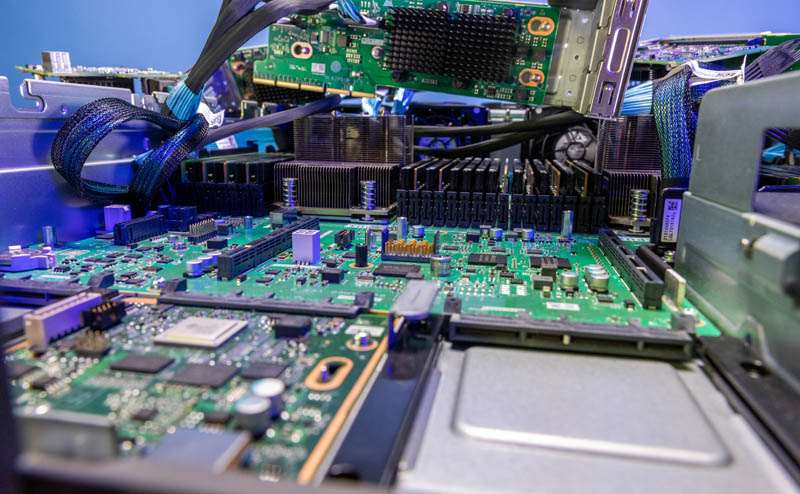
The motherboard also has a number of standard connectors. We see TPM connectors, along with PCIe riser connectors. There are also power headers for internal hard drives and accelerators.
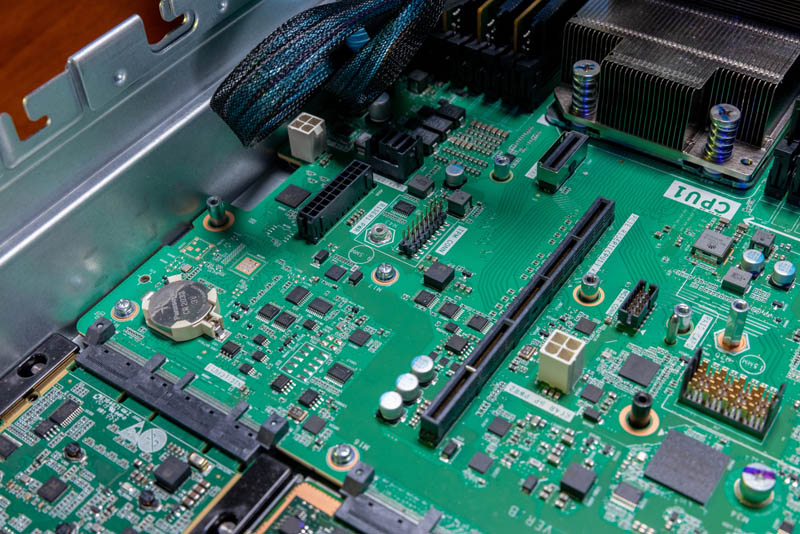
In the middle of the system, we get more risers and the storage mezzanine connector.
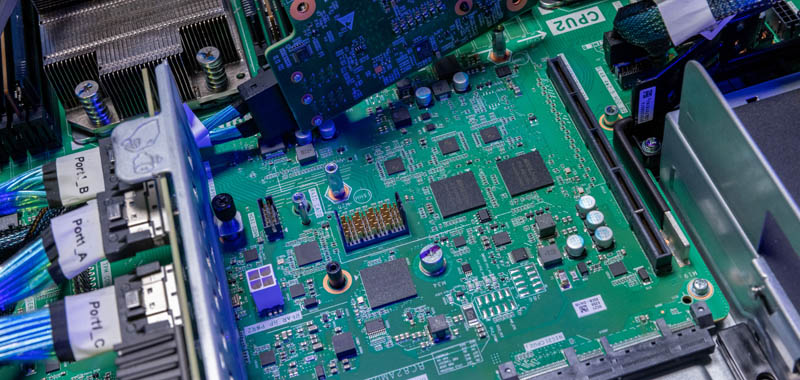
On the other side, we get power input directly to the motherboard and additional power headers for internal components.
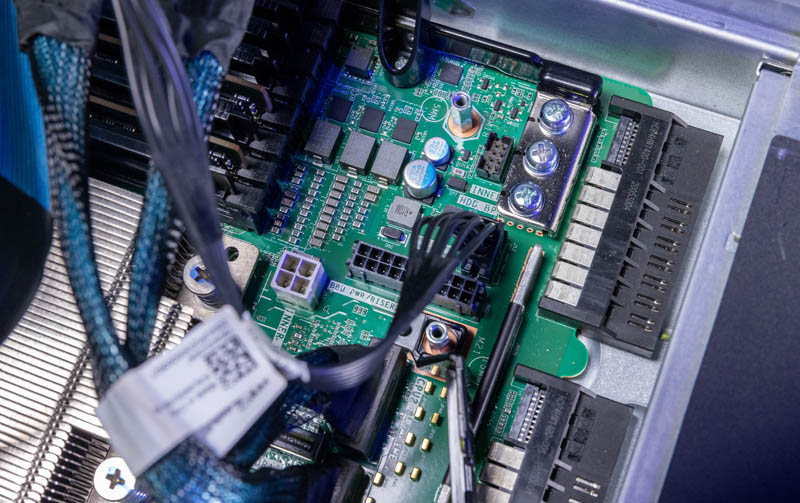
Let us next explore the risers and the forest of cables in this system.
Huawei TaiShan 200 PCIe Risers
The PCIe risers in this system are a bit different. This is likely a configuration option since it would make a lot of sense to have risers with slots. In this system though, we have PCIe risers that have cabled I/O.
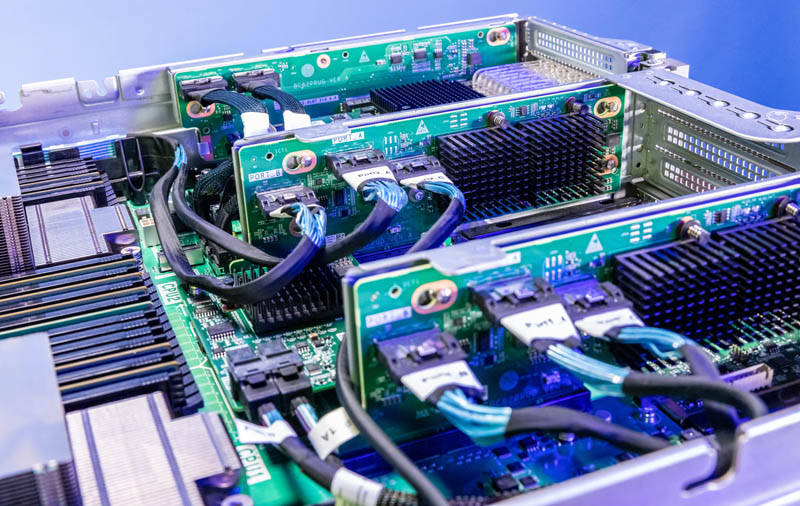
The risers are held in place by thumbscrews. These usually required us to use screwdrivers to disassemble.
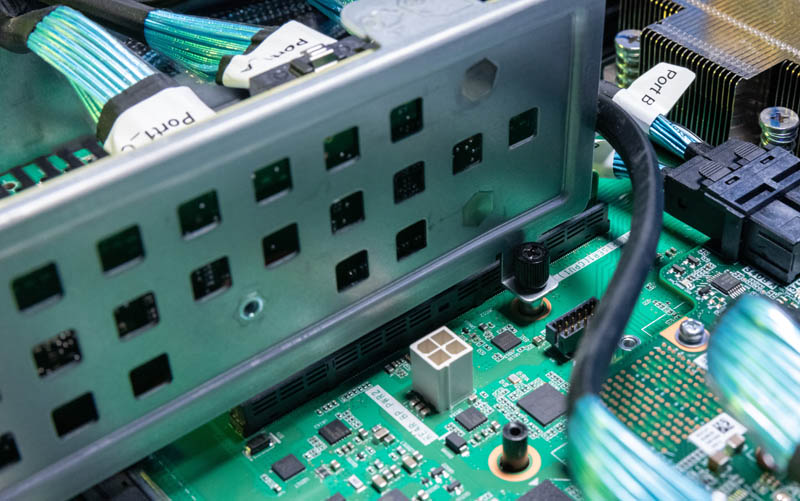
Here is one of the risers. We did not take the heatsinks off to see, since if we break something getting replacement parts is effectively impossible, but our best guess is that these have retimers under them. Those would also be very large retimer heatsinks.
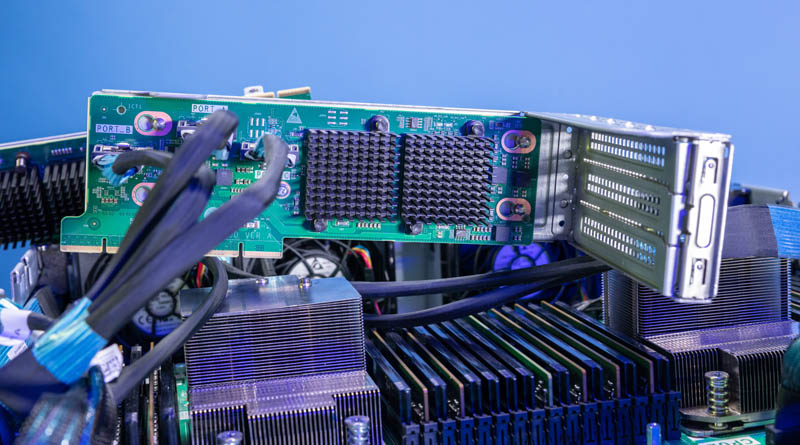
These risers are held in place mostly by pins to make them easy to service.
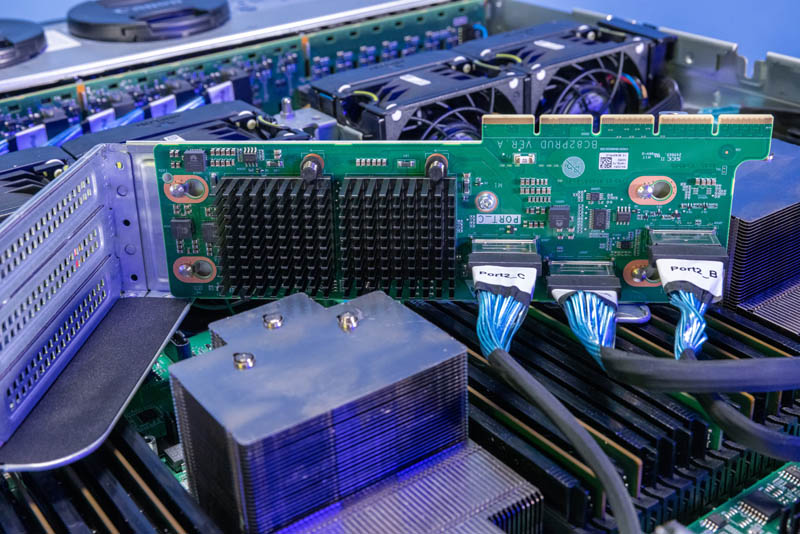
Here is a look at the middle riser:
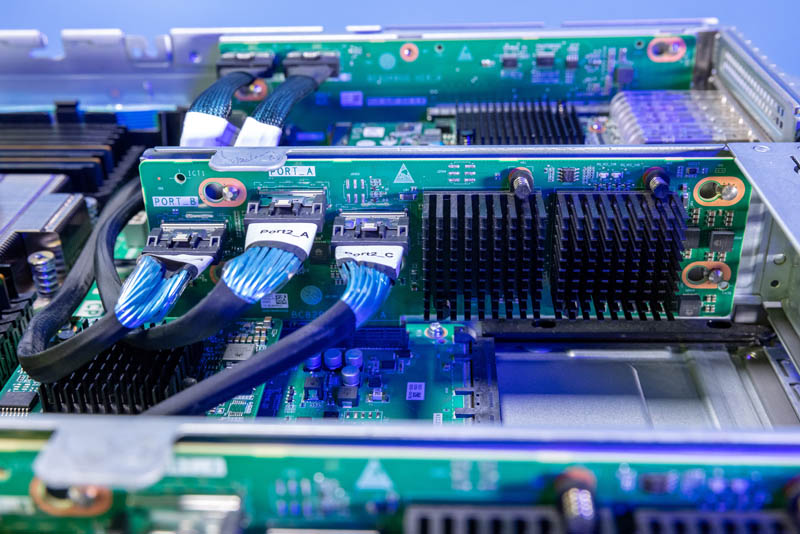
The far riser, we are going to take a more extensive look at. Next, we will take a look at the HNS 25GbE adapter in that riser and the Broadcom SAS controller.




Interesting read. Very strange that the BMC chip is undocumented. Furthermore in the blockdiagram they talk about a different model chip.
I did spot a small error in the writing:
Lenovo servers are probably a step above Huawei, then this Huawei server.
You may not have gotten far enough along in this test for the question be applicable, but does STH routinely monitor network-connected devices for “unexpected” traffic?
@Joeri – I made that a bit clearer. I agree it was chewy wording.
@Bob Niland – we are not tooled to check like a security research firm is. I would expect what you are looking for is rather sophisticated and we do not have a team that can sift through live traffic for days.
Patrick, please, stop filming hanging hardware.
There is no details visible and earlier way of showing thing was a lot better.
Please return to blue doors.
Actually it’s 25-bay backplane.
That’s a catchy headline!
But I fail to find any substance behind it: why exactly is it both forbidden and banned? And from where and under which penalty?
And just in case it’s explained in the video: I never watch those. I come to STH precisely because it can be read.
@abufrejoval
Huawei is sanctioned in the US and you can’t import it legally.
Wow these comments are off the charts. Such an out of control crowd of nerds going squirrelly over circuitry from abroad. I am lost for words. How could you keep your comments section open even after addmjtting you expected such an obvious culling of naysayers … …. …
;)
The worst thing is the cluelessness of the outright IP theft from them. HP had lots of patents on Moonshot and now they co-developed a machine with Fujitsu that looks at lot like the Huawei here. Aren’t y’all tired of the Chinese theft of intellectual property?
I fully expected more Engrish text in this server, but there is no American Megatrands or similar text to be found.
The lscpu result shows 4 NUMA nodes. This is a 2P server, so is that BIOS configuration option or is it just the way the CPU is designed?
What’s a “retimer” in this context? Its a legitimate chip for re-timing signals, but in this usage might be typo ?
@chris s I just wanna know what they’re not showing
@criggie that’s what they’re saying. you’ll see servers like dell’s and others use pcie retimers when they’re taking signals from pcie slots and then converting them to cables. there’s signal loss when you go cpu mobo->riser so then when you go cpu mobo->riser->long cable->front->nvme back plane->nvme SSD you need to boost the signal. a lot of servers use pcie retimers because of this. there’s also loss not just because of distance but also they’ve got loss from each connector
“HUR DUR Evil chinese communist theft of intellectual property !
-Written from my iPhone”
LOL
Sorry Yankees, we Chinese have surpassed you. Talk all you want about theft. You stole earlier tech from us: guns, paper, gunpowder, silk, steel, kite , etc
If it is banned how was it imported?
@ dalong Ning
We stole from you lol… Chinese business and government would steal and clone your grandma if they had a chance and could make profit!
No you have not surpassed us… our cpus, phones, cars and etc are alot better then the crap your country makes.
@Jay the funny thing is there has been 100s of cases where you “Chinese” work for many tech companies and have been caught stealing and sharing what “We” make, if your tech is so superior then please answer this, what do you guys need with anything we have created?
Only reason it’s banned in USA is that Huawei CPUs are secure and do not have CIA bookmarks, like Intel and AMD. Not even taking about backdoor controller Microsoft Pluton.
Loving these comments. There is a reason why the world needs Chinese chips. Just hope for a peaceful future. May be biased because I’m engaged to a wonderful Chinese person.
Huawei makes everything better than any company in the US can make.
I love seeing folks trying different solutions. Sometimes it works and tech gets better. I wonder if Huawei’s choices will have an impact.